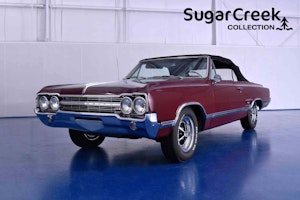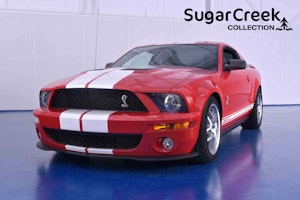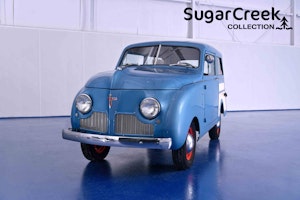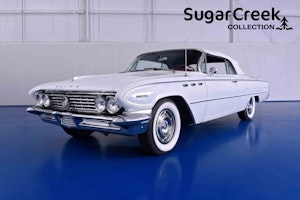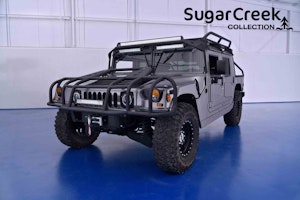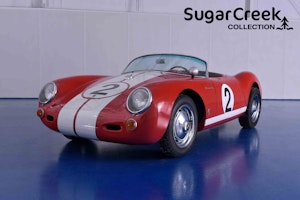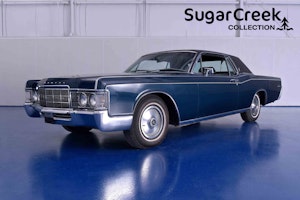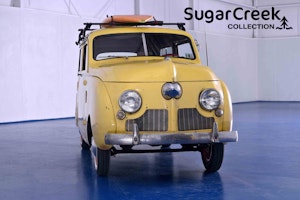Media | Articles
Sturgis Motorcycle Rally is tamer, still not a family destination
Who else but a Hells Angel – from Hawaii, no less – would be a more appropriate seatmate on my recent flight to Rapid City, S.D. for the 76th Sturgis Motorcycle Rally? Frankly, he seemed like a cupcake, but if there were any rival bikers from the Mongols on board, I was likely to catch some of the fallout.
The trip was a chance to see firsthand whether this sprawling and sometimes brawling event – Mongols and Hells Angels have fought there repeatedly, as recently as 2013 – still warrants all the notoriety. Or had the rally gone mainstream, as I’d heard? An invite from the Motorcycle Industry Council, a trade group representing bike manufacturers that was making its first official visit to the annual rally this year, put me at the center of the action.
The Sturgis rally got its start on Aug. 14, 1938, when Pappy Hoel, a dealer for Indian motorcycles, staged a race with nine bikes. Over the years, the rally became a Harley-Davidson pilgrimage, a noisy, colorful expression of biker culture. That contingent remains strong, but ever since Polaris, the Minnesota-based maker of Victory motorcycles, revived the Indian brand in 2013, the company has emphasized its Sturgis presence.
Last year’s event, the 75th anniversary, attracted a record crowd estimated at 700,000 to 1 million. It’s mostly a cruiser community, so although I have been riding for more than 40 years – and even rode through the Black Hills in 1974 – I had never considered attending the Sturgis rally. The MIC’s idea was to bring fresh eyes – like mine – to survey the scene.
So what did I find? What should you expect if you attend?
Marketplace
Buy and sell classics with confidence
Start with the accommodations: There must have been hundreds of thousands of rally participants camping in the Black Hills. A popular spot is the 600-acre Buffalo Chip facility, also a location for bike racing and concerts by acts like Cheap Trick and Kid Rock.
If you’re not up for roughing it, there are deluxe lodgings. Our MIC hosts put us up at the Blackstone Lodge and Suites in Lead, which is so named because miners had followed the “lead” to gold-bearing minerals. Excellent dining was available at places like Saloon Number 10 in downtown Deadwood, where the gunfighter and gambler Wild Bill Hickok was assassinated by Crooked Nose Jack in 1876.
The riding is equally noteworthy; one Sturgis old timer said that the big difference over the last 25 years was the quality of the roads winding through the Black Hills. They were certainly worthy of the praise. I was on a Honda NC700X DCT, powered by a parallel twin engine and equipped with the optional dual-clutch automatic transmission.
Our ridemaster, Steve Piehl, led us through long sweeping curves and tighter twisties of the Black Hills, an area that covers some 5,000 square miles, on the way to Mt. Rushmore National Memorial. As one Harley rider from Minnesota pointed out, the Black Hills are the first mountains one encounters when traveling west in the northern tier of states. Even for me, accustomed to riding in California’s mountains, it was superb.
Everywhere we went, we encountered motorcycles. Every town, junction, and gas station was clogged. We rode into Custer State Park, where bikes outnumbered the abundant buffalo.
Looking at our counterparts on their glittering cruisers and full-dress touring machines reminded me how much opportunity there is for the MIC’s rider education and safety programs. “Gear up every ride,” is the smartest policy, but on this ride bare heads, bare arms, bare legs, and often enough, sandals, were typical.
Besides the disregard for safety precautions, another big surprise was the number of three-wheelers – not only Harley, Honda and Indian trikes trundling over the roads, but also Can-Am Spyders, Polaris Slingshots and the wild Boss Hoss creations. As one rider would tell me, “A lot of us are getting older, and it’s hard to hold up a Road Glide when you put your foot down on gravel.”
Sturgis started with racing, and there’s no shortage of it now, whether one prefers the Sundance Burnouts, a tire-smoking extravaganza in Sunland, Wyo., runoffs at the eighth-mile Sturgis Dragway, hillclimbs at the Buffalo Chip’s racing complex or the various flat-track locations. Harking back to the rally’s origins, the Super Hooligan racers compete on a twisty, unpaved circuit at Buffalo Chip.
Another attraction is the Sturgis Motorcycle Museum and Hall of Fame. An inductee this year was John Penton, who influenced the development of off-road motorcycles and apparel and even set a coast-to-coast speed record on a BMW.
The Sturgis rally is organized by the City of Sturgis’s tiny Rally & Events Department. Beyond their efforts, it’s a bunch of loosely affiliated, independent events, and participating in them can be a rewarding experience if the raunchiness doesn’t bother you. But is this rally mainstream? Let’s call it accessible.
Just before leaving on Thursday, I took a final stroll down Main Street, and there was my Hawaiian Hells Angel standing at the curb. How comfortable had I grown with the Sturgis scene? I slapped him on the shoulder and said howdy. More astonishing yet, I lived to tell about it.
20170726005600)
